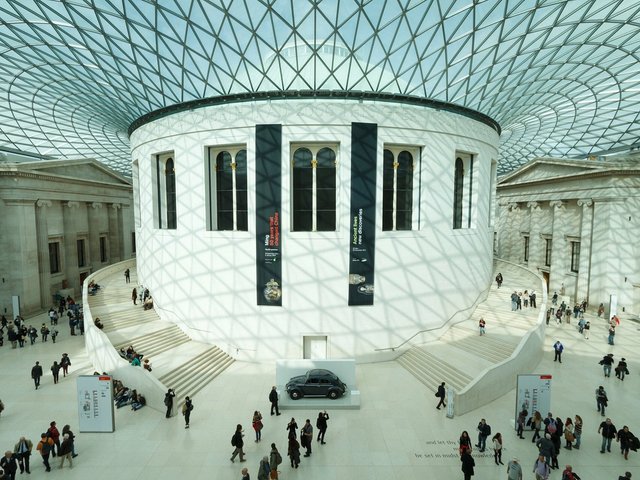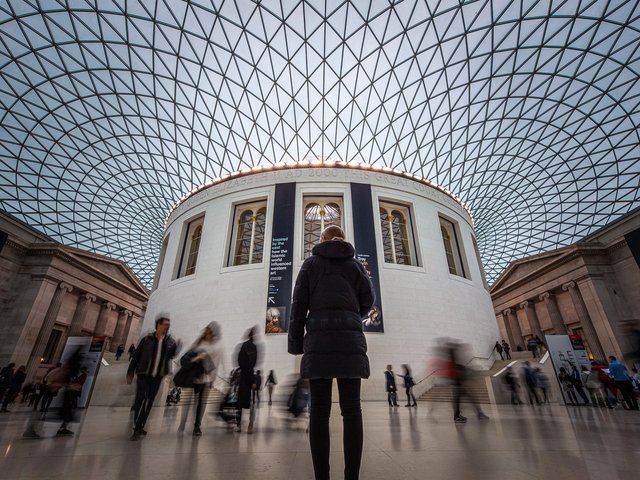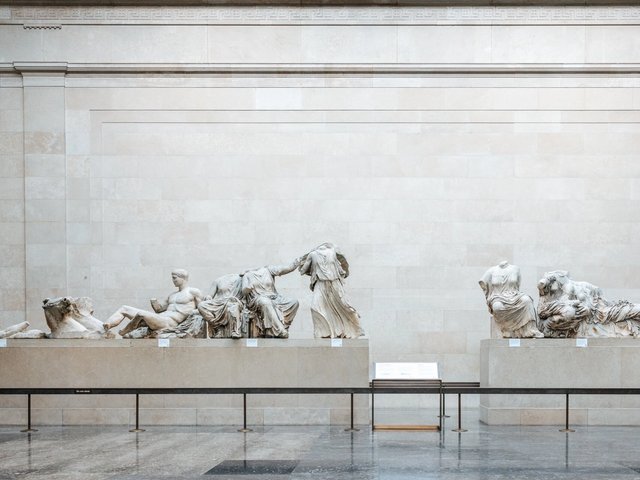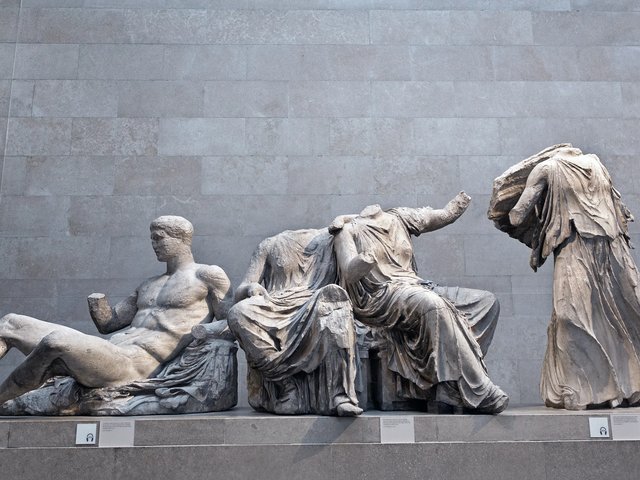Objects owned by the British Museum are hitting the road. In recent years, the London museum has quietly taken awe-inspiring artefacts into classrooms across England, giving students in primary schools the chance to view ancient treasures normally kept behind glass.
British Museum in your Classroom, part of the National Programmes partner organisation programme, is an ongoing project that involves taking museum items to schools. In one example, in late 2022, Billingham South Community Primary, Stockton, and St Joseph’s Catholic Primary in Middlesbrough came together to select an object from the British Museum to study and savour. They chose a 3,500-year-old canopic jar, which became the centrepiece of exhibitions hosted by both schools and a focus of their history topic work.
“The children were bouncing off the walls; we had children coming up to read the hieroglyphs,” says Loretta Kilroe, the British Museum’s curator for Sudan and Nubia. The initiative, developed with Tees Valley Museums, was linked to the show Ancient Egyptians: secrets of the afterlife at the Dorman Museum in Middlesbrough.
The project sparked debate about how museum educators continue to engage with the public. But what makes up a museum learning department? At the British Museum, it encompasses around 20 staff who are supported by a team of 70 artists, educators and museum teachers; this is supported further by around 500 volunteers. In relation to schools, Shani Crawford, the museum’s head of learning and programmes, says that “most of our offer is geared towards Key Stage Two (KS2) students”, primary school children aged between seven and 11.
On-site activities are varied, from “tablet tours”—technology bringing galleries to life through augmented reality—to interactive presentations in the museum lecture theatre for multiple classes, which can be a “child’s first introduction to a lecture”, Crawford says. Other KS2 activities include smaller workshops for around 35 students. On the topic of ancient Greece, students find out in a workshop what it means to be an Athenian citizen in the fifth century BC.
The museum’s virtual visits
Digital learning platforms are highly important, with schools encouraged to take part in Virtual Visits, live interactive workshops linking classrooms to an expert in one of the museum’s learning rooms. The “peek into prehistory” programme, for instance, for KS2 students, aligns with the UK national curriculum for history, helping children “discover how archaeologists uncover and interpret the timelines of the Neolithic, Bronze and Iron Ages in Britain”.
Linking to the UK history curriculum is crucial. “We are always keeping our ear to the ground and making sure that we’re aware of changes possibly coming up in the history curriculum,” Crawford says. Curators also feed into learning resources to ensure material is accurate, and check the language used.
“We have many digital resources. I think a lot about digital and how many of our national schools don’t have the opportunity to come to the museum,” Crawford says. “We’re currently doing a lot of work upgrading those resources. With virtual visits, we’re considering how we’re delivering those experiences to one class or sometimes multiple classes.” Schools can keep up to date by signing up to the museum’s monthly schools newsletter. The department is also trialling livestreamed lessons where the museum expert cannot see the students. Course materials state that the students “might be asked to discuss an idea with a partner for a minute. They might be asked to point towards the screen to indicate an option from a list of possible multiple-choice answers”.
An anonymous teacher at a south London primary school says: “I have been a few times to the British Museum with KS2 [students] to look at certain things. They have some very good material online that you can download. I’ve never done their workshops as I like to keep trips free but the price seems fair if you have a class of 30.” Another teacher says that she has to constantly monitor budgets in relation to museum visits so is mindful generally of costs when planning trips.
Students with additional learning needs are also catered for at the museum. Crawford stresses that the department offers provision to children who are neurodiverse: “We do a lot of facilitated activity, but schools can also just make plans to come here without our input.” The museum has posted online two whiteboard presentations for use in classrooms to help students with additional learning needs and their teachers prepare for visits.
The department does not shy away from looking at sensitive topics either. “We have used interesting schools resources, designed by two artists and educators of African Caribbean heritage, who invited young people to think around a lot of issues linked to empire and slavery,” Crawford says.
Adult learning activities can take a number of forms, from short courses and gallery talks to lectures and festivals. The key is diversity, Crawford says. “The biggest shift since the pandemic has been towards online events. We’re also asking: Are we focusing on younger people, people under 35, or people who may not be experts in the subject matter?”
It sounds trite but the British Museum is for everyoneShani Crawford, head of learning and programmes, British Museum
The BM’s initiatives for younger audiences have flown under the radar to a degree, though. The project Where We Are...is a national programme for young people, specifically underserved groups aged 16 to 24. With the support of the British Museum, local partner institutions manage the recruitment of 15 young people and the co-production of a youth-led arts or cultural project. From 2023 to 2024, partners have included Wakefield Museums and Castles in West Yorkshire. Hanouf Al-Alawi, the museum’s national outreach manager, told UK Museums Journal that the group of young people in Wakefield had not set foot in a museum before: “By the end of the sessions they had created the Youth Forum [a group of ten 16- to 25-year-olds that meets monthly to explore a different topic or area of the museum service]. I can say with a lot of confidence that the programme has made a huge difference to young people.
She continued: “It’s not about teaching young people how to engage with museums; the onus of that disengagement is on the museums themselves.”
Where next for the learning department? Changes are afoot as the museum embarks on its masterplan, a cultural redevelopment project that will be “the biggest transformation of any museum in the world”, says the director, Nicholas Cullinan, in a statement.
“The museum’s masterplan presents a really great opportunity for us to review our learning programme and to look at how it works in the new version of the British Museum,” says Crawford, who adds that this development has sparked new discussions around “object-based learning”.
“With things coming off display, we see this as a great opportunity,” she says. “Part of that puzzle—and being able to continue to reach the volume of schools that we’re reaching—is how do we then add to that experience of being able to get close up and perhaps even touch objects as well?”
So, what are Crawford’s priorities? “With the masterplan, changing and adapting our learning programme will be guided by and inclusive of what our schools want, as well as being curriculum led. That’s a huge priority.” She is also looking at how the museum ensures it is reaching those schools that are not coming to the museum. “With our adult programmes, we have talked about diversity in the programming. I think everything is audience-led in terms of understanding; it sounds trite but the British Museum is for everyone.”






